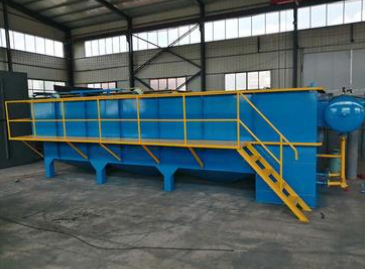NEWS&EVENTS
As an important metal extraction technology, hydrometallurgy has one of the core steps of the precipitation process of metal ions, and sedimentation tanks play a vital role in this process. Sedimentation tanks, through their unique working principle, achieve effective separation of metal ions and impurities, providing a solid foundation for metal recovery and utilization.
The working principle of the sedimentation tank is based on the action of gravity or centrifugal force, which causes the metal ions in the solution to react chemically with the added precipitant to generate water-insoluble metal compound precipitates. In the hydrometallurgical process, the metal ions in the ore or waste slag are first dissolved into the solution, and then these solutions are introduced into the sedimentation tank. In the sedimentation tank, the metal ions react with the precipitant and gradually accumulate to form precipitates. These precipitates are further filtered, centrifuged and other treatment steps to obtain metal products with higher purity.
The application of sedimentation tanks in hydrometallurgy is mainly reflected in two aspects: metal recovery and wastewater treatment. Through the precipitation process, the metal ions in the solution are converted into recyclable metal compound precipitates, thereby achieving effective metal recovery. At the same time, the sedimentation tank can effectively remove metal ions and harmful substances in the wastewater, so that the wastewater meets the discharge standards or reuse requirements, and contributes to environmental protection and resource conservation.

When selecting a sedimentation tank, many factors need to be considered, including the nature of the solution, the type and concentration of metal ions, the type and dosage of the precipitant, and the sedimentation time. These factors will directly affect the precipitation effect and metal recovery rate. Therefore, the reasonable selection and design of the sedimentation tank is crucial to the success of the hydrometallurgical process.
In addition, there are many types of sedimentation tanks, such as horizontal flow sedimentation tanks, vertical flow sedimentation tanks, and radial flow sedimentation tanks. Different types of sedimentation tanks have different characteristics and applicable scopes, and need to be selected according to specific circumstances. By optimizing the precipitation conditions, such as adjusting the pH value, temperature, and stirring speed, the precipitation efficiency and metal recovery rate can be further improved.
In summary, the sedimentation tank plays a vital role in hydrometallurgy. It is not only one of the key steps in metal recovery, but also an important means of wastewater treatment. By reasonably selecting and designing sedimentation tanks, the metal recovery rate can be significantly improved, the cost of wastewater treatment can be reduced, and the sustainable utilization of resources and the sustainable development of the environment can be achieved.